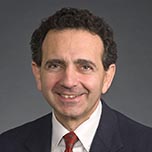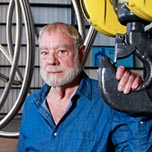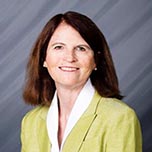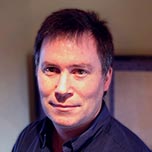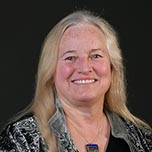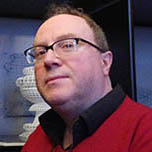Brown Symposium
Brown Symposium XXVII
What Things May Come: 3D Printing in the Fine Arts and Sciences
February 26-27, 2015
This symposium will address the impact of 3D technology on the human mind as it endeavors to meet future challenges in the arts and sciences.
We are in this moment on a very long and steep slope of change in how we humans do things in this world.
Although the focus is at the moment on making things we will see a remarkable shift in how our brains respond to solving problems. We have already observed this change in classrooms where students new to art, who have never drawn before are able to construct forms directly in virtual reality and translate their ideas into real world solutions. This shift in creativity and how the mind forms its responses is responsible for developing solutions from regenerating our bodies to conserving our resources in viable effective ways. This technology holds answers we have not yet begun to explore. What is not being discussed in the public realm and what we will focus on in this symposium is how this technology changes the very way we think and approach creative solutions from different fields of study.
It’s important to note that the ideas that 3D technology now facilitates have been with us since we began drawing images on the walls of caves. Human beings have been representing our three-dimensional world on flat surfaces for thousands of years. But we live in a three D world and most of its problems are 3D in nature.
International 3D Print Sculpture Exhibition
International Digital Sculpture exhibition—coordinated by Mary Visser, Herman Brown Chair and Professor of Art at Southwestern University, and Christian Lavigne, President of ARS Mathematica of Paris—Fine Arts Gallery, Sarofim School of Fine Arts at Southwestern University, Feb. 4–March 4, 2015. Reception: Feb. 26 at 4:30 p.m.
|
Art Exhibit: “What Things May Come: The Third International 3D Print Sculpture Exhibition” |
Art Opening Reception for “What Things May Come” |
Higher Ed: Technology, Art, Ethics, and More Converge in 3D Printing
Listen to Jennifer Stayton and Southwestern University President Dr. Ed Burger discuss the convergence of technology, economics, art, ethics, and morality in grappling with the issues raised by what 3-D printing can do.
Brown Symposium Speaker and Panel Recording
Watch the presentations and panels from Brown Symposium on YouTube.















